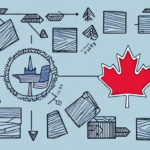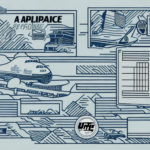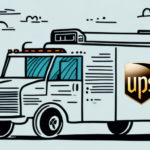How to Get the Best Freight Pricing with UPS Not Previously Billed Ground
Shipping is an essential component of any business operating in today's market, and finding ways to save on shipping costs is crucial. One effective method is utilizing UPS Not Previously Billed Ground. This service can significantly reduce your shipping expenses, but it's important to fully understand how it works. In this article, we delve into the details of UPS Not Previously Billed Ground, its benefits, and the steps to enroll. Additionally, we provide tips for maximizing savings, explore factors affecting freight pricing, offer strategies for negotiating better rates, outline best practices, highlight common mistakes to avoid, and present real-life case studies of businesses that have successfully cut costs using this service.
Understanding UPS Not Previously Billed Ground
UPS Not Previously Billed Ground is a specialized shipping service designed to help businesses save on freight costs. This service offers lower rates compared to standard ground shipping options, particularly for shipments that have not been previously billed or are sent to new destinations. By leveraging this service, companies can achieve significant savings, especially when shipping large volumes or to multiple locations.
According to UPS's 2023 annual report, businesses using this service have seen an average shipping cost reduction of 15%. This makes it a valuable tool for companies looking to optimize their logistics and reduce operational expenses.
Benefits of Using UPS Not Previously Billed Ground
The primary advantage of using UPS Not Previously Billed Ground is the potential for substantial cost savings. By securing lower rates, businesses can reduce their overall shipping expenses, which can improve profit margins and provide a competitive edge.
- Cost Efficiency: Lower shipping rates help businesses minimize expenses.
- Convenience: Easy sign-up process and reliable shipping options tailored to businesses of all sizes.
- Environmental Impact: UPS's commitment to sustainability means choosing this service can help reduce your carbon footprint.
Furthermore, a study by the UPS Sustainability Initiatives highlights that companies using eco-friendly shipping options contribute to a significant reduction in greenhouse gas emissions.
Tips for Maximizing Savings with UPS Not Previously Billed Ground
To fully capitalize on savings, consider the following strategies:
- Consolidate Shipments: Combining multiple orders into a single shipment can reduce the number of packages and overall costs.
- Utilize UPS Online Tools: Manage and streamline your shipping process using UPS's digital tools to save time and reduce paperwork.
- Take Advantage of Discounts: Explore UPS's volume discounts and bundling options to further decrease costs.
- Optimize Packaging: Use appropriately sized and eco-friendly packaging to avoid extra fees and support sustainability.
- Regularly Review Shipping Data: Analyze your shipping patterns to identify opportunities for additional savings.
Implementing these tips can lead to enhanced efficiency and cost-effectiveness in your shipping operations.
How to Sign Up for UPS Not Previously Billed Ground
Enrolling in UPS Not Previously Billed Ground involves a straightforward registration process:
- Visit the UPS registration page.
- Provide essential business information, including your business name, address, and contact details.
- Submit the registration form and await confirmation from UPS.
Once registered, you'll gain access to discounted shipping rates and the ability to manage your shipments more effectively. This service is particularly beneficial for businesses that frequently ship packages without a UPS account number.
Steps for Requesting a Quote with UPS Not Previously Billed Ground
Obtaining a shipping quote is simple:
- Log in to your UPS account.
- Select the shipping tab and choose "UPS Not Previously Billed Ground" from the dropdown menu.
- Enter the shipment details, including weight, dimensions, destination, and origin.
- Review the provided quote, which gives an estimate based on the entered information.
Keep in mind that the quote is an estimate and the final cost may vary due to additional fees or surcharges. It’s advisable to compare quotes with other shipping options to ensure you're receiving the best deal.
Factors That Affect Your Freight Pricing with UPS Not Previously Billed Ground
Several elements influence the cost of shipping with UPS Not Previously Billed Ground:
- Size and Weight: Larger and heavier shipments incur higher costs.
- Distance: The farther the destination, the more it costs to ship.
- Seasonality: High-demand periods, such as holidays, can lead to increased shipping rates.
- Additional Services: Services like Saturday delivery or signature confirmation add to the overall cost.
- Type of Goods: Shipping hazardous materials or fragile items requires special handling, increasing expenses.
Understanding these factors can help you anticipate costs and make informed decisions about your shipping strategies. For detailed pricing information, refer to the UPS pricing guide.
How to Negotiate Better Rates with UPS Not Previously Billed Ground
Negotiating favorable rates can lead to additional savings. Here are some strategies:
- Consolidate Shipments: Fewer, larger shipments can qualify for better rates.
- Leverage Volume Discounts: High-volume shippers can negotiate lower rates based on their shipping volume.
- Consider Long-Term Contracts: Committing to a long-term partnership with UPS may result in more stable and reduced rates.
- Regularly Compare Carriers: Staying informed about competitor rates can provide leverage during negotiations.
Engaging with your UPS representative to discuss your specific needs and shipping patterns can open opportunities for customized discounts.
Best Practices for Shipping with UPS Not Previously Billed Ground
Adhering to best practices ensures efficient and cost-effective shipping:
- Proper Packaging: Use sturdy, appropriately sized packaging to protect items and avoid damage during transit.
- Accurate Labeling: Clearly label packages with complete recipient and sender information to prevent delivery issues.
- Monitor Shipments: Utilize UPS tracking to stay informed about the status of your shipments.
- Stay Within Weight and Size Limits: Adhere to UPS's guidelines to avoid additional fees.
Implementing these practices can enhance the reliability of your shipments and reduce the likelihood of unexpected costs.
Common Mistakes to Avoid When Using UPS Not Previously Billed Ground
Avoiding common pitfalls can save your business time and money:
- Ignoring Available Discounts: Regularly check for new discounts and promotions to maximize savings.
- Poor Packaging: Inadequate packaging can lead to damages and increased costs.
- Inaccurate Shipping Information: Mistakes in addresses or package details can cause delays and additional fees.
- Neglecting Delivery Time Frames: Failing to plan shipments according to delivery deadlines can result in expedited shipping costs.
- Not Tracking Shipments: Without tracking, you may miss issues or delays affecting your deliveries.
Being proactive and attentive to these aspects can enhance your shipping efficiency and cost-effectiveness.
Case Studies: Real-Life Examples of Companies Saving Money with UPS Not Previously Billed Ground
Many businesses have successfully reduced their shipping costs using UPS Not Previously Billed Ground:
- Company A: By consolidating shipments and leveraging UPS discounts, they saved over $50,000 annually.
- Company B: Optimizing their packaging process led to a 20% reduction in shipping costs.
- Company C: Utilizing UPS Not Previously Billed Ground for international shipments helped them avoid unexpected fees, resulting in significant savings.
These examples demonstrate the tangible benefits of strategically using UPS's specialized shipping services to enhance cost efficiency.
Comparing the Pricing and Services of Other Freight Carriers to UPS Not Previously Billed Ground
When selecting a freight carrier, it's essential to compare pricing and services to ensure you're obtaining the best value for your business:
- FedEx: Known for fast shipping options but may have higher rates compared to UPS for ground shipping.
- DHL: Excels in international shipping but can be costlier for domestic shipments.
- USPS: Offers competitive rates for lightweight packages but may lack the comprehensive services provided by UPS for larger shipments.
By evaluating these factors, businesses can make informed decisions tailored to their specific shipping needs. Tools like ShipScience's Carrier Comparison can assist in analyzing and selecting the most suitable freight carrier.
Conclusion
In summary, UPS Not Previously Billed Ground is a valuable service for businesses seeking to reduce their shipping costs while maintaining reliable delivery standards. By understanding how the service works, leveraging available discounts, adhering to best practices, and avoiding common mistakes, companies can optimize their shipping strategies for maximum savings. Furthermore, comparing UPS's offerings with other freight carriers ensures that you select the most cost-effective and efficient solution for your business needs. Implementing these strategies can lead to significant financial benefits and a more streamlined shipping process.






















